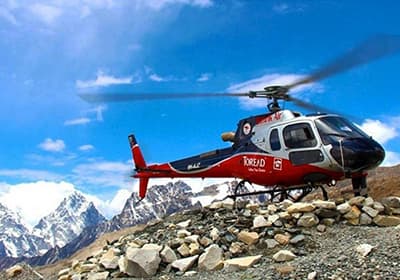Lumbini- Birthplace of Lord Buddha
Nepal, nestled in the Southern part of Asia, boasts some of the world's most captivating attractions. Mt. Everest, the tallest mountain on Earth, proudly graces its territory, drawing adventurers from around the globe. But Nepal is much more than its towering peaks; it's the revered motherland of Lord Buddha, a country celebrated for its rich biodiversity and characterized by its multilingual, multicultural, and multi-religious society, all living in harmonious coexistence.
This enchanting land is adorned with a plethora of cultural and natural treasures, including a remarkable 10 UNESCO World Heritage sites that bear testament to Nepal's historical significance. From the rolling hills to the majestic mountains, ancient temples, serene monasteries, and serene water bodies, Nepal feels like a slice of heaven for those seeking thrilling adventure sports activities.
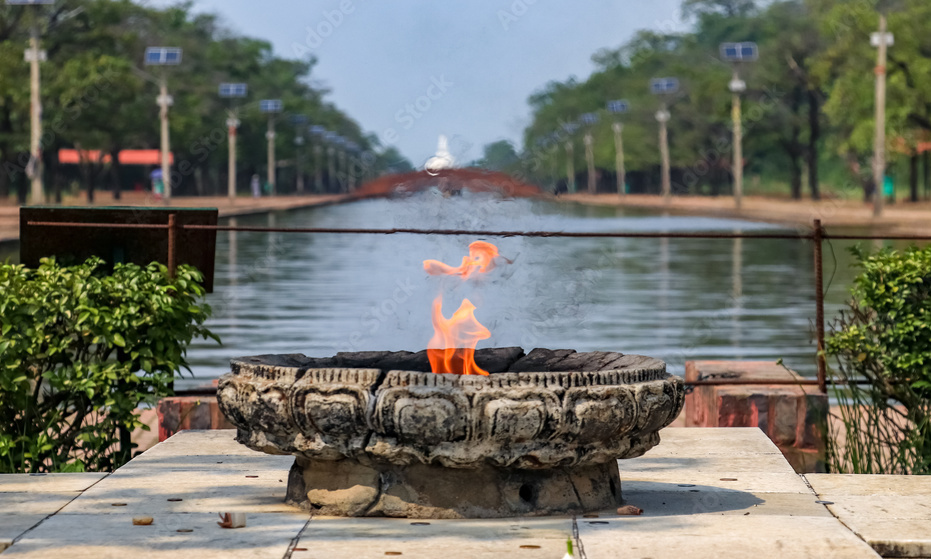
What sets Nepal apart is its extraordinary affordability, allowing travelers to explore these heavenly places without breaking the bank. Yet, it's not just the landscapes that make Nepal unforgettable; it's the warmth and humility of its people that truly enrich the travel experience.
Among the numerous pilgrimage sites, Nepal hosts iconic places like Pashupatinath, a renowned Hindu temple, and Janakpur, the sacred birthplace of Goddess Sita. However, the crown jewel of spiritual destinations is undeniably Lumbini, the hallowed Birthplace of Lord Buddha, where countless devotees converge to offer prayers for global peace.
In Nepal, you'll discover a world of contrasts, from the soaring heights of Everest to the tranquil serenity of Lumbini, all within a nation that celebrates diversity, spirituality, and the breathtaking beauty of nature. It's a land where adventure meets spirituality, where nature's grandeur meets human kindness, and where travelers embark on a journey of a lifetime
About Lumbini: The motherland of Lord Buddha
Lumbini, renowned as the birthplace of Gautam Buddha, stands as one of the most revered sites in the world of Buddhism and is proudly recognized as a UNESCO World Heritage Site. Revered as the harbinger of peace, Lord Buddha's birthplace is also hailed as the epicenter of global tranquility. Nestled within the heart of Nepal, Lumbini has evolved into a premier tourist destination, captivating the hearts of thousands of visitors annually.
While the Mayadevi Temple marks the precise location of Lord Buddha's birth, Lumbini boasts a remarkable array of Buddhist temples and monasteries that have been generously contributed by various countries worldwide. Here, you can embark on a cultural journey that spans across China, Japan, Myanmar, Cambodia, Vietnam, Thailand, France, and South Korea, each leaving its unique imprint on the landscape.
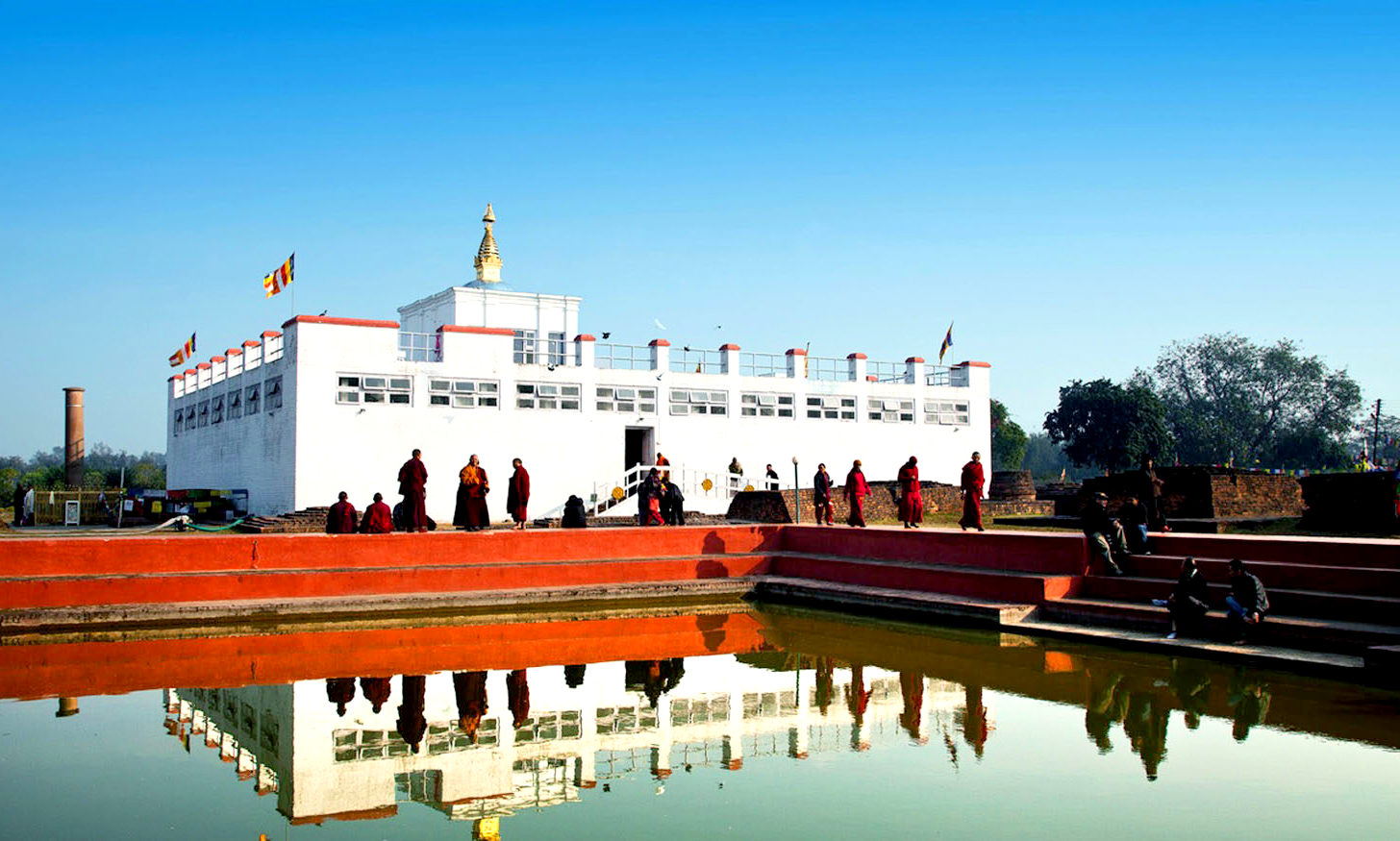
Beyond the temples, Lumbini's sacred grounds are adorned with monastic retreats, a museum, an array of monuments, and the prestigious Lumbini International Research Institute. The significance of visiting the birthplace of Lord Buddha extends beyond spiritual pilgrimage; it encompasses a profound exploration of Buddhism's history and culture. Lumbini has transcended its role as a religious sanctuary to emerge as a tourist gem, captivating seekers of peace, history, and architectural beauty.
If your quest is to experience serenity, immerse yourself in Buddhism's rich tapestry, and marvel at exquisite architectural marvels, consider extending your stay to explore Lumbini's expansive offerings.
Luxury Holidays Nepal presents a meticulously curated Lumbini tour package, offering you the ultimate opportunity to delve into Buddhism's depths, cultural richness, and architectural splendor within the cradle of Lord Buddha's enlightenment.
The Historical Significance of Lumbini
The history of Lumbini, as the birthplace of Siddhartha Gautama Buddha, founder of Buddhism and revered as Lord Buddha, dates back to 623 B.C., making it an essential pilgrimage site for Buddhists worldwide. Situated in a prominent garden, Lumbini has evolved into a sacred destination of profound significance.
Lumbini's historical importance was further solidified when it was designated as a World Cultural Heritage Site in 1997, recognizing its global significance. Notably, the Indian Emperor Ashoka, deeply influenced by Buddhism, embarked on a pilgrimage to Lumbini and erected a lasting monument, the Ashoka Pillar, as a mark of remembrance. This pillar, made of enduring stone, stands as a testament to Ashoka's reverence for Lord Buddha and his commitment to the spread of Buddhism throughout his empire.
Today, Lumbini has blossomed into the primary hub for Buddhist pilgrimage worldwide. The archaeological remains found here are intrinsically connected to the birth of Siddhartha Gautama, highlighting its paramount significance. Visitors to Lumbini can trace the footsteps of Lord Buddha, exploring the profound historical and spiritual heritage associated with this sacred land.
The rich history of Lumbini revolves around the life of Siddhartha Gautam Buddha, known as Lord Buddha, and his birthplace. It continues to be a place of contemplation, devotion, and exploration for those seeking to delve into the roots of Buddhism and the remarkable journey of one of history's most influential spiritual figures.
Where is Lumbini? How to get to Lumbini?
Lumbini, the sacred birthplace of Gautam Buddha, is nestled in the Rupandehi District of Lumbini Province, situated within the Terai Plains of Southern Nepal. For travelers seeking to embark on a spiritual pilgrimage or immerse themselves in the rich history of Buddhism, Lumbini awaits.
Reaching Lumbini is a journey that unveils the beauty of Nepal's diverse landscape. Here are several ways to make your way to this hallowed destination:
- From Kathmandu to Lumbini: Lumbini is approximately 326 kilometers away from the capital city, Kathmandu. You can choose to fly directly from Tribhuvan International Airport in Kathmandu to Bhairahawa, Siddharth Nagar, which takes just half an hour. From Bhairahawa, it's a mere 22 kilometers to reach Lumbini, making it a convenient and efficient option.
- From Pokhara to Lumbini: If you are visiting the famous tourist destination of Pokhara, you can also make your way to Lumbini with relative ease. Lumbini is 163 kilometers away from Pokhara, and the journey by bus typically takes around 4 hours.
- From Chitwan to Lumbini: Likewise, if you find yourself exploring the natural wonders of Chitwan, you can seamlessly continue your journey to Lumbini. Lumbini is approximately 85.1 kilometers from Chitwan, and the bus ride usually takes around 6 hours.
From both Pokhara and Chitwan, you can easily access various bus companies, offering options ranging from microbuses to deluxe buses, ensuring a comfortable and scenic journey to the sacred grounds of Lumbini. Whether you choose to arrive from Kathmandu, Pokhara, or Chitwan, Lumbini's rich history and spiritual significance eagerly await your exploration.
Entry Fee
Entering inside the Mayadevi Temple, which is taken as the place where Lord Budha was born, requires an entry charge.
| Entry Fee for the Visitors |
| Rs. 200 or foreigners |
| Rs. 50 for SAARC Countries |
| Free for children below 10 years and Nepalese visitors. |
| And entering all the other temples is completely free. |
Hotel and Restaurants
There are several large hotels in Bhairava and Butwal to provide good facilities for visitors. And those visitors who want to stay in Lumbini, there are some hotels around the Lumbini hotels which are clean and well-facilitated. You can stay in monasteries around the area.
Major Attraction of Lumbini- Birthplace of Lord Buddha
Lumbini has a reputed status not only as a pilgrimage of Buddhism but also renowned as one of the top tourist destinations in Nepal. Thousands of visitors come every day just to visit temples and monasteries in Lumbini. Lumbini has several temples on its premises, including the historically important Maya Devi Temple named after the mother of Lord Budha. Also, the Sacred Mayadevi Pond, Bodhi Tree, and Ashoka Pillar are important sites that carry a long history of Budha. Besides this, there are rivers, museums, a Buddhist Religion Research center, and different cultural heritage sites and religious places being built by different countries. The Lumbini is covered with tall green trees and the old blocks are marked back to the 3rd century B.C.The short description of Major Attraction of Lumbini, which has historically and archaeologically valued and has a prominent history, the Birthplace of Lord Buddha, is enlisted below:
Maya Devi Temple
Maya Devi Temple is an old Buddhist temple, located at UNESCO World Heritage Site, Lumbini, Nepal. This temple is considered the birthplace of Gautam Budha, also taken as the main temple of Lumbini, the whole of Buddhism. The temple has a mark where Lord Budha was born, also the archaeological structure:- Ashoka Pillar just a site of the temple is dated back to the 3rd century BCE.
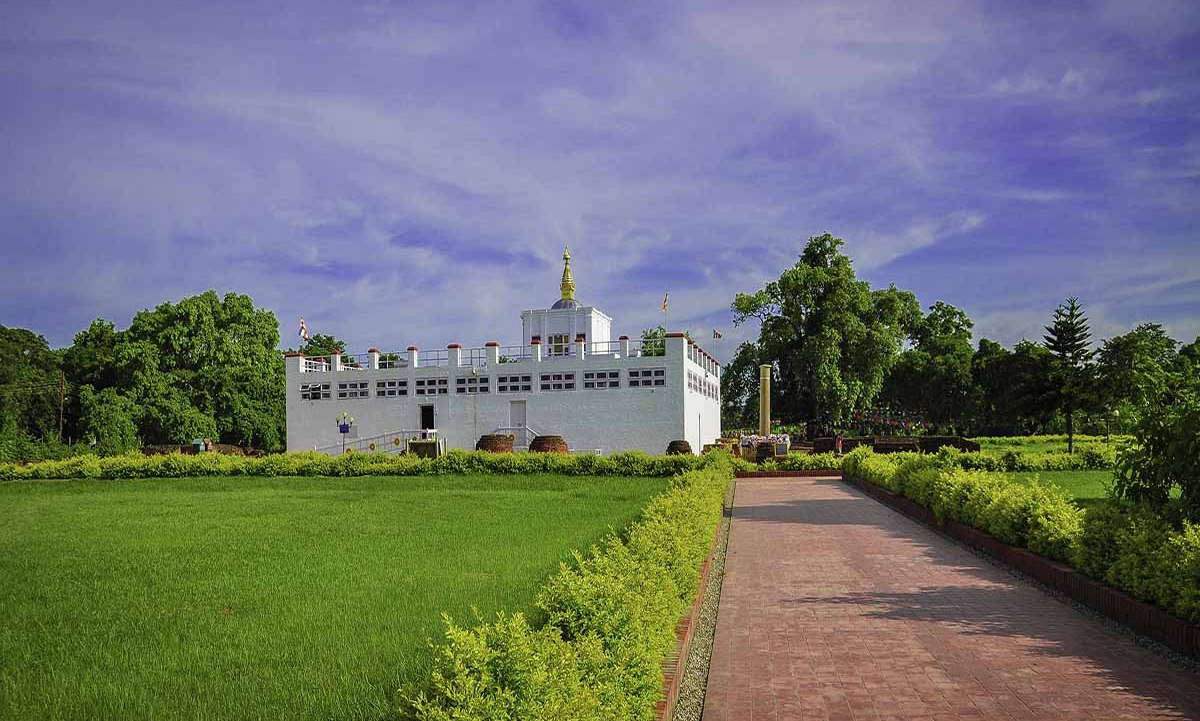
The temple lies right next to the holy Pushkarini pool and a holy garden. This holy temple is peaceful and is filled with a number of prayer flags arranged between the trees, just outside the Mayadevi temple. This place would surely provide you with the best feeling to stop around on your journey.
Bodhi Tree
Bodhi Tree, lies on the bank of the holy Maya Devi pond, in the Maya Devi temple premises. The tree is an old Peepal Tree, scientifically called Ficus religiosa, which is covered by colorful prayer flags. People believed that wishes made while binding the flags are usually granted. The Bodhi tree is considered very important in Buddhism because Lord Budha achieved understanding and liberation from anger, delusion, and self-indulgence in the Bodhi tree of Bodh Gaya.
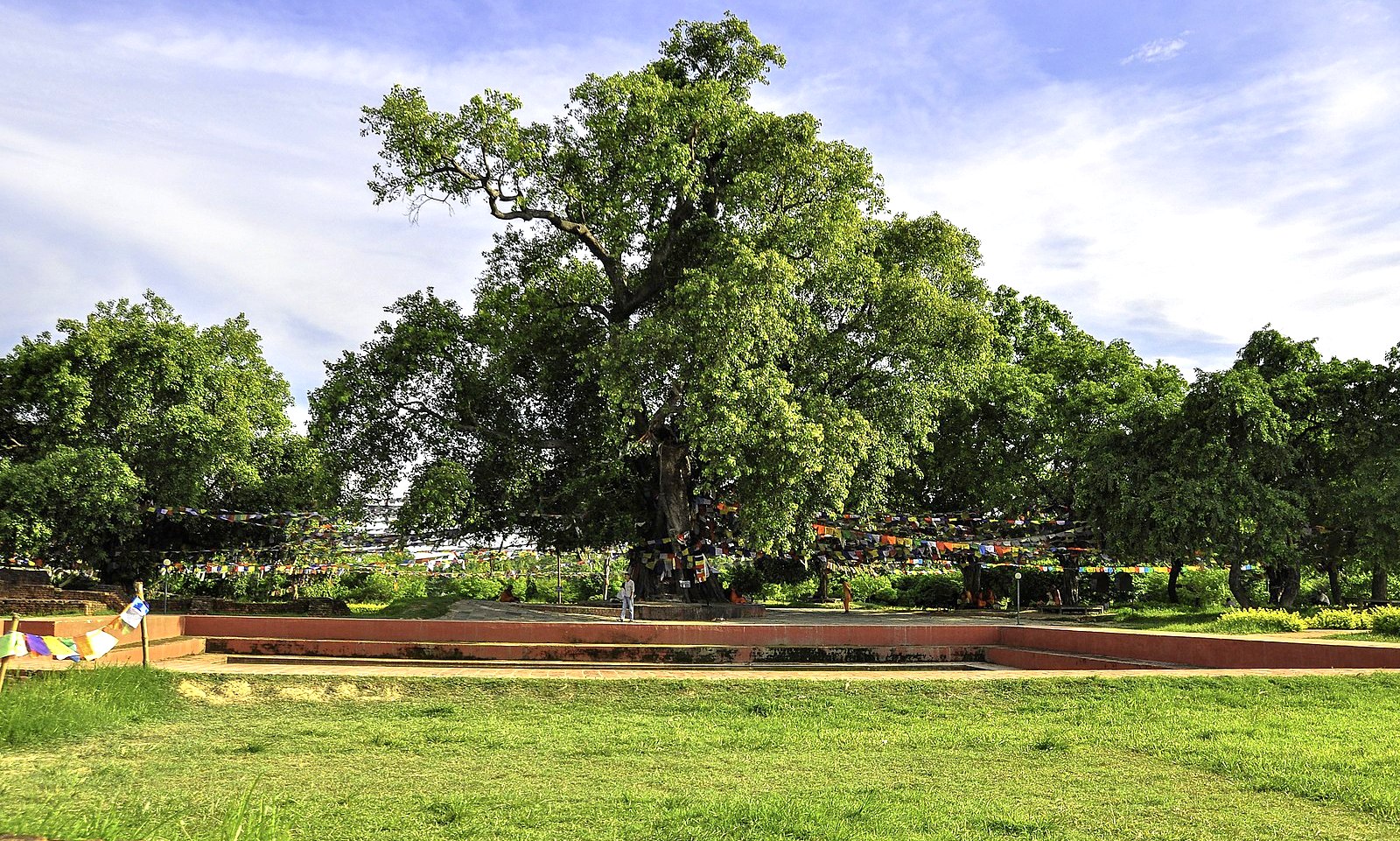
The whole journey of Budha’s life after he abdicated his throne, is connected with the tree, he became disciplined, achieved enlightenment, and was taught about his understanding till his last breath.
Mayadevi Pond
Mayadevi Pond stands as a sacred testament to the profound history of Lumbini, where Lord Buddha's mother, Mayadevi, embarked on her first bath after the birth of Siddhartha Gautam Buddha. Nestled within the serene confines of Lumbini Garden, directly in front of the Maya Devi Temple, this square-shaped pond offers a spiritual oasis.
Each side of the pond gently slopes towards the water, facilitating easy access for pilgrims seeking to connect with its sanctity. During significant occasions, the steps leading to the water's edge are adorned with flickering oil lamps that cast a mesmerizing glow upon the pond after sunset, a reverent tribute to this hallowed waterbody.
The significance of Mayadevi Pond extends beyond religious devotion; it carries a profound historical legacy, offering a tangible link to the very moment of Lord Buddha's birth. It stands as a tranquil sanctuary, where spirituality and history harmoniously converge, inviting visitors to immerse themselves in its sacred waters and the rich heritage of Lumbini.
Ashoka Pillar
Nestled within the serene confines of the Mayadevi Temple complex, the Ashoka Pillar stands as a profound testament to both faith and history. This remarkable pillar, towering at six meters in height, was meticulously erected by the illustrious Indian Emperor Ashoka during the 3rd century.
The Pillar's significance lies in its deep-rooted connection to Emperor Ashoka's pilgrimage to the birthplace of Lord Buddha. It was in the wake of this sacred journey that the Ashoka Pillar was raised, underlining its dual role as a symbol of religious veneration and historical commemoration.
As visitors stand in the presence of the Ashoka Pillar, they are invited to contemplate not only the religious devotion of a great emperor but also the enduring historical ties that bind this sacred land to the legacy of Lord Buddha. It stands as a profound marker of the spiritual and historical tapestry that Lumbini, the birthplace of Buddhism, embodies.
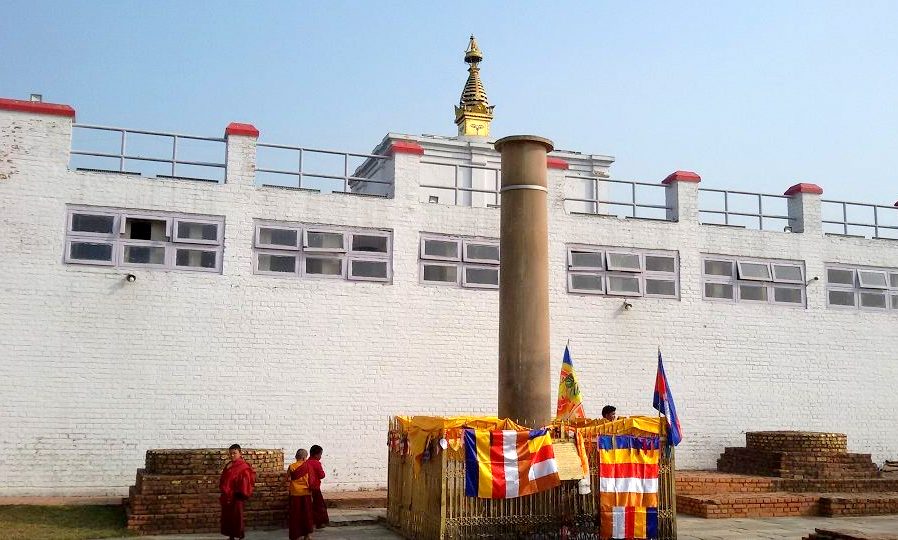
World Peace Pagoda
The white-colored, pagoda-style glorious stupa i.e., World Peace Pagoda also known as Japan Peace Stupa, is a 21st-century monument. The place is one of the prominent tourist destinations, located outside the main compound of Lumbini. The monument has a golden Buddha statue, constructed by Japanese Buddhists. The outstanding structured stupa has a dome in the midpoint, and a corridor encircling the dome on the second level. You can explore, and visit the World Peace Pagoda, the symbol of peace all over the week, which inspires you to walk the path of peace and to live in unity, which is very important in today's world.
China Temple ( Zhong Hua Chinese Buddhist Monastery)
Zhong Hua Chinese Buddhist Monastery, affectionately referred to as the China Temple, graces the landscape with its elegant and distinctive pagoda-style architecture. This exquisite sanctuary is situated in close proximity to one of China's renowned Forbidden Cities.
Upon entering the temple, visitors are enveloped by an aura of tranquility and joy within the serene internal courtyard. It serves as a sacred refuge, inviting all who seek solace and spiritual contemplation to bask in its peaceful embrace. Zhong Hua Chinese Buddhist Monastery, or the China Temple, stands as a harmonious fusion of architectural grace and spiritual serenity, offering a unique and enriching experience for all who cross its threshold.
 edited.jpg)
Lumbini Monastic Site
The Lumbini Monastic Site is a large area filled with various monasteries and temples which are constructed to provide insights into the Gautam Buddha’s life and help in understanding the significance of Buddhism, its value, evolution, and its methods. The Monastic site is filled with scenic beauty and is built with outstanding architectural design. The monastic site is separated into two areas by a water canal which is usually used to explore boats by tourists. You can explore the Buddhist tradition, culture, and history on this Monastic site.
Lumbini Crane Sanctuary
The famous pilgrimage site, the birthplace of Lord Buddha, and Lumbini Garden are now home to Cranes. This place is spread over a large area of around 6sq.km and also consists of the Tilaurakot palace, where Lord Buddha spent the first 29 years of his life. The unique attraction of this place has made it worth a visit. Lumbini Crane Sanctuary has the purpose of keeping safe the endangered Sarus Cranes, around the area. Also, it is believed that Sidhartha Gautam Buddha fought for the safety of Sarus Cranes. The place would be the best destination for those who would love to visit the pilgrimage sites and wildlife areas.
Lumbini Museum
The Lumbini Museum lies inside the UNESCO World Heritage Site, Lumbini, in a religious garden area. The Lumbini Museum was constructed in the 1970s and is now remade by Kris Yao, a famous architect from Taiwan, and his team. The Lumbini museum consists of around 1200 artifacts along with metal sculptures, religious manuscripts, coins from Khurasan and Maurya Dynasty, Terra Cottas, and straps from all around the world representing the Lumbini.
Royal Thai Buddhist Monastery
The Royal Thai Buddhist Monastery, a majestic sanctuary, is a remarkable testament to the resplendent Thai Monastery Style, paying homage to Lord Buddha. This awe-inspiring edifice is constructed from pristine white marble, exuding an air of purity and devotion. Adjacent to it, a blue-roofed meditation center stands as a testament to exquisite architectural design.
Stepping into the Royal Thai Buddhist Monastery is akin to embarking on a spiritual journey through the heart of Thailand. Its stunning wat-style architecture, characterized by intricate detailing and a deep reverence for Lord Buddha, captivates the senses. This serene oasis, with its blend of white marble and a brilliantly designed meditation center, is an architectural marvel that offers visitors a glimpse into the beauty and devotion of Thai Buddhist culture.
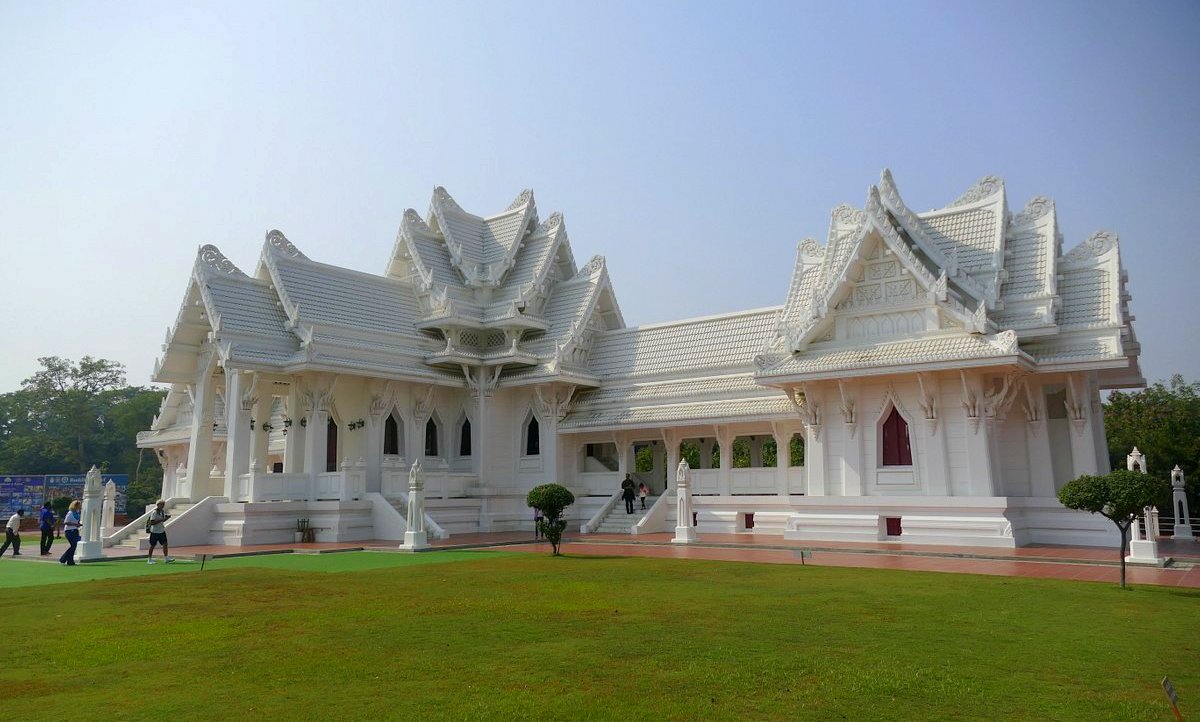
Dharma Swami Maharaja Buddha Vihar
Dharma Swami Maharaja Buddha Vihar is the Tibetan-style Buddhist Gomba, which was set up by His Eminence Chogye Trichen Rinpoche and king of Mustang, therefore this belongs to the Sakyapa order. Tara Puja is performed every day by the 60 monks who live there. The peaceful environment of this temple makes it a perfect place for meditation and self-observation.
Sri Lankan Monastery
The Sri Lankan Monastery, often referred to as the Sri Lankan Temple, stands as a magnificent tribute to the life and significance of Gautam Buddha. Within its beautiful confines, visitors are granted profound insights into the life and teachings of this revered spiritual luminary.
This remarkable monastery serves as a living testament to several significant religious practices and events, particularly those cherished in the heart of Sri Lanka. It embodies the essence of Buddhism as practiced in the island nation, inviting all who enter to explore the rich tapestry of faith, tradition, and devotion that defines Sri Lankan Buddhism.
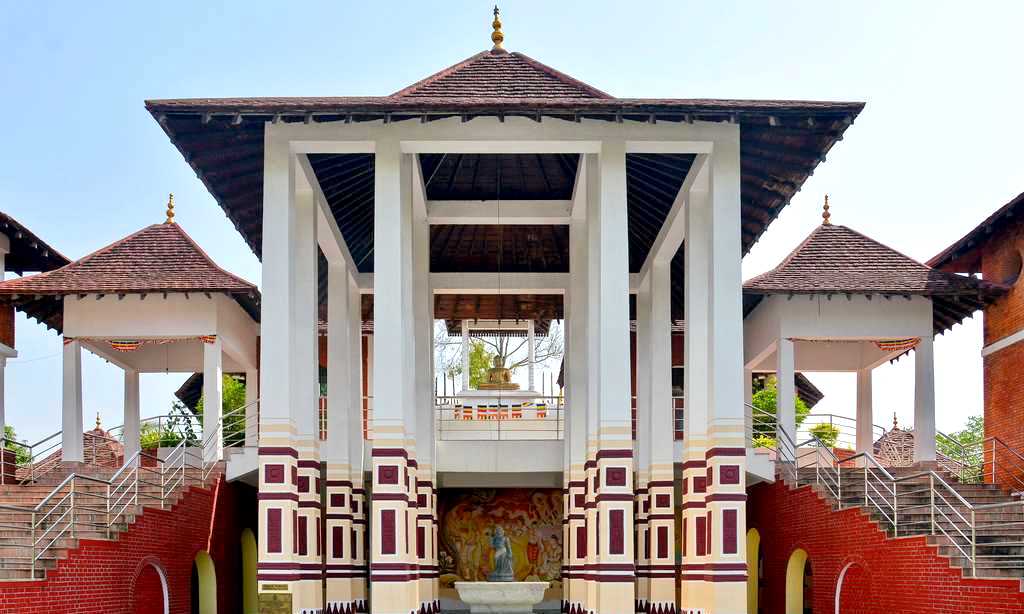
Cambodian Monastery
The Cambodian monastery is built in the famous Angkor Wat architectural design and is a combination of spiritual forces and colorful fantasy which has made the monastery one of the most fascinating temples in Lumbini. The immense wall is covered with attractive and complex designs.
Myanmar Golden Temple (Zhong Hua Chinese Buddhist Monastery)
Myanmar Golden Temple is one of the old structure temples in the Lumbini, dedicated to Lord Buddha. The temple is built with fine Burmese architecture style, has Lokamani Pula Pagoda, and three prayer halls inside the temple premises. This structure gives a beautiful view of the temple. This is the perfect example of the good relationship between Nepal and Myanmar. The golden statue of Lord Buddha is kept in a meditation position. The peaceful environment of this temple has made this a place perfect for meditation and solitude.
Korean Temple (Dae Sung Shakya)
The Korean Temple, also known as Dae Sung Shakya Sa, stands as a testament to the impressive Korean architectural style. This serene sanctuary is a haven of peace and spiritual reflection, inviting all who enter to discover its unique charm.
The temple's allure is further enhanced by the vibrant murals adorning its ceiling, adding a touch of color and elegance to its ambiance. The Korean Temple's beauty lies not only in its architecture but also in the daily rituals of meditation practiced by numerous monks who frequent this sacred space, infusing it with a sense of calm and rejuvenation.
 edited.jpg)
Beyond its spiritual offerings, the monastery extends a warm welcome to visitors, providing a community sleeping area and affordable meals priced at just NPR 500 per day. This gesture of hospitality ensures that all who seek solace and serenity in the embrace of the Korean Temple can do so without concern, making it a truly refreshing and peaceful experience for all
Manang Samaj Stupa
This oldest Stupa was constructed back in 600 BC with the aid of the Manang Community, Northern Nepal. Therefore, the stupa is named Manang Samaj Stupa. The stupa is surrounded by colorful murals and has a golden statue at the center.
Vietnam Phat Quoc Tu Temple
The Vietnam Phat Quoc Tu Temple, nestled within the sacred grounds of Lumbini, serves as a beautiful testament to the strong and enduring relationship between Nepal and Vietnam. This temple, characterized by its grandeur, is a striking sight, with artificial mountains and a spacious roof that flank its revered premises.
For those with an interest in Buddhism, the Vietnam Phat Quoc Tu Temple is a must-visit destination while in Lumbini. It stands as a living embodiment of the harmonious connections that transcend borders and cultures, inviting all who come to witness the beauty of friendship and spirituality intertwined in this serene sanctuary.

Great Drigung Lotus Stupa
The Great Drigung Lotus Stupa is a historically and religiously important Stupa, that was built by Germany. Therefore represents a good relationship between Germany and Nepal. The hollow crown party in the building is slightly covered in glass, which depicts the presence of a Buddha statue inside, also Buddhist murals are in the main prayer’s domed ceiling. This stupa is truly one of the most beautiful stupas in Lumbini and was constructed with the aid of the German Tara Foundation. You can see the beautiful amalgamation of wood, gold, and carvings. The different structures have different meanings. The stupa is cared for and run by Rinpoche.
Thrangu Vajra Vidya Monastery
Thangu Rinpoche is the one who believed in the Buddha’s teachings, peace principle, knowledge, and unity. Thrangu Vajra Vidya Monastery is one of the institutions actively helping Buddhist studies in Nepal. Therefore, this monastery is dedicated to Thrangu Rinpoche. Several monks are inspired by this monastery. This monastery is one of the great attractions in Lumbini.
Tilaurakot
Apart from the Lumbini, Tilaurakot, the ancient city of Kapilvastu, Nepal, is a historically important place, lying 29km west of Lumbini. Lord Buddha spends the first 29 years of his life in this place before he officially abdicates his throne and begins the Buddha’s path.
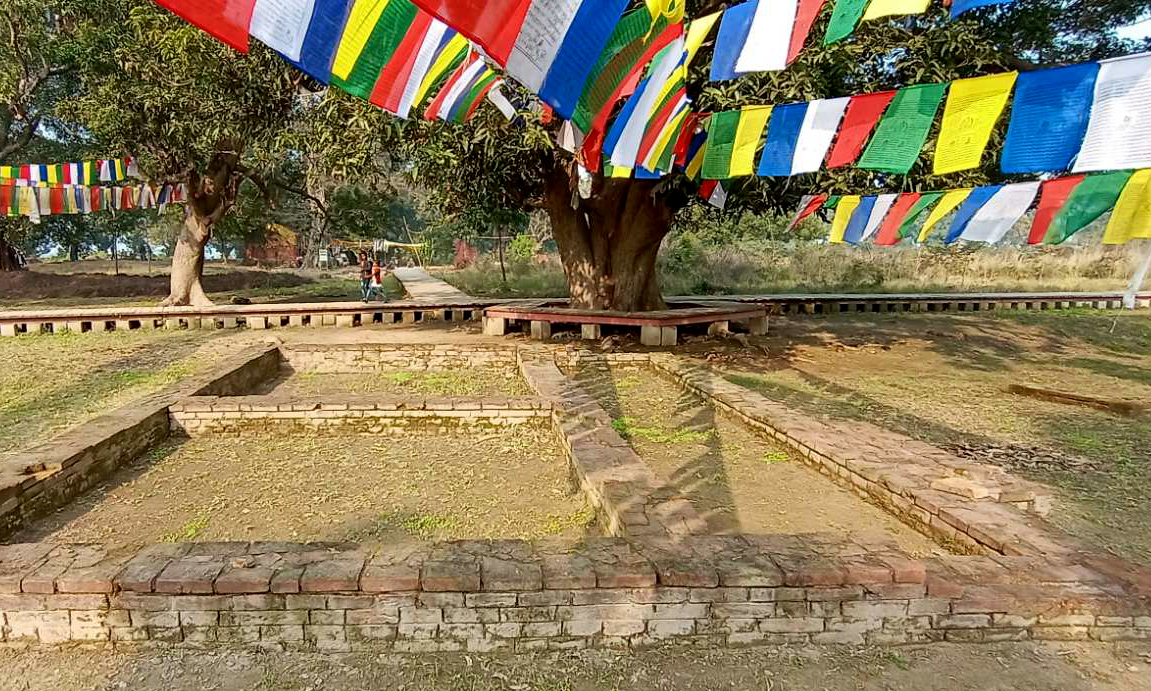
Tilaurakot lies in the peaceful meadow, on the Banganga river bank. The archaeological work is going to give insights into the Buddha's life. The place gives you a warm feeling and ancient vibes while visiting.
Tips While Visiting Lumbini
These are some practical and valuable tips for visiting Lumbini:
- Appropriate Footwear: Wear sandals or flip-flops that are easy to take off when entering temples and monasteries where it's customary to remove your shoes.
- Early Morning Exploration: Begin your sightseeing early in the morning to avoid the scorching heat of the day. The mornings in Lumbini are often cooler and more comfortable for walking.
- Rickshaw Tours: Consider hiring a rickshaw for getting around Lumbini. It's a convenient and enjoyable way to explore the area, especially if you want to cover a lot of ground.
- Mosquito Protection: Due to the warm climate, mosquitos can be prevalent in Lumbini. To protect yourself, carry mosquito-repellent creams like Odomos or similar products.
- Medications and First Aid: Carry a basic first-aid kit with essentials like band-aids, pain relievers, and any necessary medications. It's always better to be prepared.
- Hydration: Stay hydrated throughout the day, especially if you're exploring in the heat. Carry a refillable water bottle to avoid buying single-use plastics.
- Respect Local Customs: Be mindful of local customs and traditions, especially when visiting religious sites. Dress modestly and act respectfully.
- Local Cuisine: Try local Nepali and international cuisine at restaurants in Lumbini. Sample the flavors of the region.
- Stay Informed: Gather information about the specific rules and regulations at each site within Lumbini. Some places may have restrictions on photography or certain behaviors.
- Environmental Responsibility: Dispose of your trash responsibly and consider minimizing plastic waste. Help keep Lumbini clean and beautiful for future visitors.
- Learn Basic Phrases: Learning a few basic Nepali phrases can enhance your interactions with locals and show respect for their culture.
- Travel Insurance: Ensure you have comprehensive travel insurance that covers medical emergencies and unexpected situations during your visit.
By following these practical tips, you can make the most of your trip to Lumbini while staying comfortable, respectful, and well-prepared for your exploration of this sacred and historical site.
Lumbini stands as a sacred haven, the birthplace of Lord Buddha, where spirituality, history, and serenity converge. This destination beckons travelers to delve into the life of a spiritual luminary and embark on a contemplative journey. Its historical importance, sacred sites, and tranquil ambiance make it an essential pilgrimage for those seeking a profound connection with Buddhism and inner peace. As you embrace the rich heritage of Lumbini, you'll depart with not only a deeper understanding but also a sense of enlightenment and tranquility that lingers within.
Frequently asked questions (FAQs) about Lumbini
Q: Where is Lumbini located?
A: Lumbini is located in the Rupandehi District of the Lumbini Province in Nepal. It's in the southwestern part of the country, near the Indian border.
Q: Why is Lumbini significant?
A: Lumbini is recognized as the birthplace of Siddhartha Gautama, who later became known as Lord Buddha. It's a UNESCO World Heritage Site and a major pilgrimage site for Buddhists worldwide, symbolizing peace, enlightenment, and the origin of the Buddhist faith.
Q: What are the main attractions in Lumbini?
A: Key attractions in Lumbini include the Maya Devi Temple, which marks the exact spot of Lord Buddha's birth; the Ashoka Pillar, established by Emperor Ashoka to commemorate his pilgrimage to the site; the Sacred Garden, which houses ancient ruins and the marker stone; and various monasteries built by Buddhist communities from around the world.
Q: How can I reach Lumbini?
A: Lumbini can be accessed by air through flights to Siddharthanagar (Bhairahawa), followed by a short drive to Lumbini. There are also bus services from major cities in Nepal like Kathmandu, Pokhara, and Chitwan.
Q: Is there an entrance fee for Lumbini?
A: Yes, there is a nominal entrance fee for foreign visitors to enter Lumbini. The fee contributes to the maintenance and conservation of the site. However, fees can change, so it's best to check the latest information before visiting.
Q: What is the best time to visit Lumbini?
A: The best time to visit Lumbini is from October to April when the weather is cooler and more pleasant. The summer months can be quite hot, making outdoor exploration less comfortable.
Q: Are there accommodations available in Lumbini?
A: Yes, Lumbini offers a range of accommodations, from guesthouses and budget hotels to more luxurious options. Many are located near the main site, providing easy access for visitors.
If you are looking for tour packages in Nepal please click here.
If you need any further information, please contact us, Email: at [email protected], Phone: at +977- 985 100 5129 (WhatsApp)
#Tags
Tripadvisor
5.0910 reviewsGoogle
4.8110 reviewsFacebook
4.1 recommend44 ReviewsTrustpilot
4.1 Great(5 reviews)- Trusted by50K plus traveller




